| Posted: Jan 03, 2014 | |
Nanotechnology spotlights - the best of 2013 |
|
| (Nanowerk Spotlight) Here are the 10 most popular Nanowerk Nanotechnology Spotlight articles of 2013: | |
| Nanotechnology in sports equipment: The game changer | |
 The degree of competitiveness in sports has been remarkably impacted by nanotechnology like any other innovative idea in materials science. Within the niche of sport equipments, nanotechnology offers a number of advantages and immense potential to improve sporting equipments making athletes safer, comfortble and more agile than ever. Baseball bats, tennis and badminton racquets, hockey sticks, racing bicycles, golf balls/clubs, skis, fly-fishing rods, archery arrows, etc. are some of the sporting equipments, whose performance and durability are being improved with the help of nanotechnology. Nanomaterials such as carbon nanotubes, silica nanoparticles, nanoclays fullerenes, etc. are being incorporated into various sports equipment to improve the performance of athletes as well as equipments. Medical microrobots to deliver drugs on demand (w/video) |
|
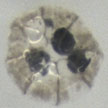 Advances in micro- and nanoscale engineering in the medical field have led to the development of various robotic designs that one day will allow a new level of minimally invasive medicine. These micro- and nanorobots will be able to reach a targeted area, provide treatments and therapies for a desired duration, measure the effects and, at the conclusion of the treatment, be removed or degrade without causing adverse effects. Ideally, all these tasks would be automated but they could also be performed under the direct supervision and control of an external user. Two-dimensional nanotechnology materials beyond graphene |
|
 The fascination with two-dimensional (2D) materials that has started with graphene has spurred researchers to look for other 2D structures like for instance metal carbides and nitrides. A new, very comprehensive review article takes a look at our current knowledge of 2D materials beyond graphene. The paper outlines the different chemical classes of 2D materials and discuss the various strategies to prepare single-layer, few-layer, and multilayer assembly materials in solution, on substrates, and on the wafer scale. Designing nanogenerators for large-scale energy harvesting |
|
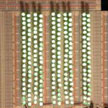 Harvesting unexploited energy in the living environment is increasingly becoming an intense research area as the global push to replace fossil fuels with clean and renewable energy sources heats up. There is an almost infinite number of mechanical energy sources all around us - basically, anything that moves can be harvested for energy. This ranges from the very large, like wave power in the oceans, to the very small like rain drops or biomechanical energy from heart beat, breathing, and blood flow. In an intriguing demonstration, researchers at Georgia Tech have now demonstrated that the technology offered by nanogenerators can also be used for large-scale energy harvesting. Nanotechnology manufacturers: Graphene |
|
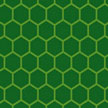 An increasing number of companies is involved in commercializing graphene on an industrial scale although the high cost of graphene is one of the major obstacles to its widespread adoption for commercial applications. The Nanomaterial Database we also list commercial graphene products and we keep a list of graphene manufacturers and suppliers that is constantly updated. Currently, this list contains 40 companies which are listed in this article. Wearable textile battery can be recharged by sunlight |
|
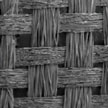 Going hand in hand with the development of wearable electronic textiles, researchers are also pushing the development of wearable and flexible energy storage to power those e-textiles. Researchers have now developed wearable textile batteries that can be integrated with flexible solar cells and thus be recharged by solar energy. The team found unconventional materials for all of the key battery components and integrated them into a fully wearable battery. Silicon chips inserted into living cells can feel the pressure (w/video) |
|
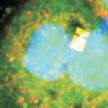 The study of individual cells is of great importance in biomedicine. Many biological processes incur inside cells and these processes can differ from cell to cell. The development of micro- and nanoscale tools smaller than cells will help in understanding the cellular machinery at the single cell level. All kinds of mechanical, biochemical, electrochemical and thermal processes could be studied using these devices. Researchers have now demonstrated a nanomechanical chip that can be internalized to detect intracellular pressure changes within living cells, enabling an interrogation method based on confocal laser scanning microscopy. How squid and octopus might point the way to nanotechnology-based stealth coatings (w/video) |
|
 For a long time, scientists have been fascinated by the dramatic changes in color used by marine creatures like squids and octopuses, but they never quite understood the mechanism responsible for this. Only recently they found out that a neurotransmitter, acetylcholine, sets in motion a cascade of events that culminate in the addition of phosphate groups to a family of unique proteins called reflectins. Having begun to unravel the natural mechanisms behind these amazing abilities, researchers are trying to use this knowledge to make artificial camouflage coatings. New work addresses the challenge of making something appear and disappear when visualized with standard infrared detection equipment. Electronic skin takes your temperature |
|
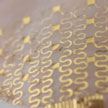 Previous work in stretchable, flexible electronics has shown that conventional, silicon wafer based fabrication techniques can be modified to apply electronics conformally to the heterogeneous topography of the skin. Now, researchers have demonstrated the development of a device platform that enables high precision temperature mapping of the skin in ways that have, until now, been extremely difficult in research and impossible to implement for widespread use. Will future battery parts be grown on a rice field? |
|
 Researchers in Korea have found that rice husks - the outer, protective covering of a rice kernel - can be a source of silicon that can be used for high-capacity lithium battery anodes. Most of today's lithium-ion batteries rely on anodes made from graphite, a form of carbon. There are several candidate electrodes to replace graphite as the anode for lithium-ion batteries and silicon has been recognized as a favorable anode material because its capacity is 3-5 times larger than those of existing graphite anodes. The new work demonstrates that rice husks can be used to produce silicon with an ideal porous nanostructure for use in high-capacity lithium-ion battery anodes. |
|
| Also check out our Top 10 Spotlight articles from previous years. | |
|
|
|
|
Become a Spotlight guest author! Join our large and growing group of guest contributors. Have you just published a scientific paper or have other exciting developments to share with the nanotechnology community? Here is how to publish on nanowerk.com. |
|
